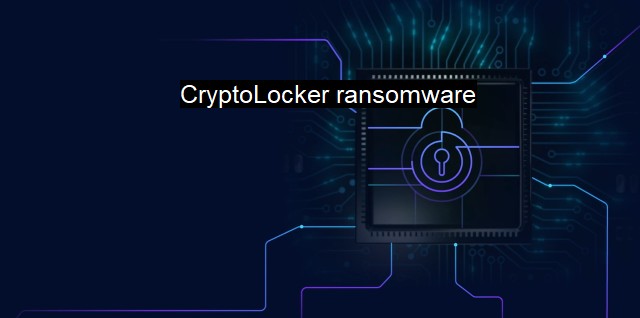What is CryptoLocker ransomware?
CryptoLocker Ransomware: Understanding the Threat and How Antivirus Software is Fighting Back
CryptoLocker ransomware is a form of malware that first gained notoriety in 2013 for its widespread and ruthless attacks. As the name suggests, the malware employs a strategy known as ransomware whereby it encrypts files on an infected computer system and holds them ransom.CryptoLocker represents a significant threat due to its unique characteristics and mechanism of action. This type of ransomware attacks users by encrypting their data, such as images, videos, documents, and more, with a nearly unbreakable encryption system. The result renders the victim's data inaccessible until a specific ransom is paid. Extreme cases have seen individual users and organizations locked out of crucial data, sometimes resulting in damage beyond repair if the victim does not have proper data backup.
CryptoLocker ransomware typically infiltrates systems through spam emails or malicious websites. Emails disguised as legitimate correspondences trick users into opening a document or clicking a link hiding the ransomware. On other occasions, the malware is delivered to a system through a “payload” downloaded upon user interaction with a botnet-infected website.
Once the ransomware has compromised a user’s system, it searches for files with particular extensions hard disc locations and connected gadgets, encrypting them in the process. The malware uses RSA public-key cryptography, making it nearly impossible to retrieve the data without the decryption key. This action sets the stage for the next phase in which CryptoLocker displays a threatening message informing victims that their files have been encrypted and the only way to access their files again is to pay a ransom within a stipulated time, usually conveyed through a countdown timer. These demands are often in Bitcoin or other cryptocurrencies because these payment systems provide anonymity.
One major concern surrounding CryptoLocker ransomware is its military-grade encryption strategy, which makes it almost impossible to decrypt the locked files without the key. This characteristic, combined with the anonymous nature of the ransom transactions, allows the malware to pose a significant challenge to cybersecurity professionals.
In responding to such attacks, cybersecurity experts and antivirus companies advise against paying ransom to cybercriminals as it reinforces their activities. Doing so does not guarantee recovering the data either. Instead, protective measures such as maintaining updated antivirus software, frequent backups of essential data, and user education on the risks and prevention of ransomware attacks are essential tools against CryptoLocker ransomware and similar threats.
The cybersecurity community has made headway against CryptoLocker ransomware and its iterations. Many antivirus companies now provide software that actively prevents CryptoLocker’s malicious activities, either by detecting and neutralizing the malware before it gets a chance to encrypt data, or by recognizing the encryption process once it begins, and cutting it off. given the persistent evolution of malware tools, continued vigilance and preparedness remain crucial.
The existence and success of CryptoLocker ransomware emphasize the importance of robust cybersecurity practices. These threats are further amplified by the increasing digitalization and reliance on computer systems to store essential data. Thus, understanding such severe threats highlights the immeasurable value of implementing reliable antivirus solutions, extensive user training, and regular data backups as a defense against the ever-evolving universe of ransomware. As a community, we must stay a step ahead in understanding and combating cyber threats to ensure the security of our digital lives.

CryptoLocker ransomware FAQs
What is Cryptolocker ransomware?
Cryptolocker ransomware is a type of malware that encrypts the victim's files, rendering them inaccessible until a ransom is paid to the attacker.How does Cryptolocker ransomware infect a system?
Cryptolocker ransomware can infect a system through a phishing email, a malicious attachment or link, or by exploiting vulnerabilities in software.What should I do if my system is infected with Cryptolocker ransomware?
If your system is infected with Cryptolocker ransomware, disconnect from the internet and immediately contact your IT department or a cybersecurity professional. Do not pay the ransom, as there is no guarantee that your files will be restored.How can I protect my system from Cryptolocker ransomware?
To protect your system from Cryptolocker ransomware, use anti-malware and antivirus software, keep your software and operating system up to date, and educate yourself and your employees on how to identify and avoid phishing scams. Also, it is important to regularly back up your data to an offline location.| | A | | | B | | | C | | | D | | | E | | | F | | | G | | | H | | | I | | | J | | | K | | | L | | | M | |
| | N | | | O | | | P | | | Q | | | R | | | S | | | T | | | U | | | V | | | W | | | X | | | Y | | | Z | |
| | 1 | | | 2 | | | 3 | | | 4 | | | 7 | | | 8 | | |||||||